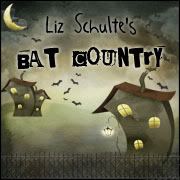Are you a pantser or plotter?
I get asked this question a lot and I normally say I am
pantser because it is easier than explaining what I actually do.
I don’t often blog about writing because I know a lot of you
know don’t care about the mechanics behind the story, but I also know some of
you are interested in writing. So while I was procrastinating working on
my final round with Dark Passing before it goes to the editor, I thought maybe,
just maybe someone would find my method helpful. So if you don’t mind, I am going to share.
(Even if you do mind, it’s too late, I’ve already done it.)
My first draft of any book is almost completely pantser
material (FYI a pantser isn’t a person who pulls down someone else’s pants. If
you thought that, this might not be the post for you. A pantser is a writer who
lets the characters dictate the action). All of my novels are originally written
like this. I do not plot, but I do think ahead to a certain degree while I am
writing; however, the story doesn’t necessarily go in the direction I
anticipate it will and I follow it wherever it takes me. So many of my plans
come to nothing.
However, come the revision rounds I turn into a hardcore
plotter. I have a notebook in which I breakdown each chapter into: world count,
characters in chapter, plot advancement (used for main plot and sub plots), and
the hook to carry the reader to the next chapter. Once I go through the whole
book in this manner it is easier to pinpoint where my story is weak or has
holes or if I accidentally dropped a character. Then I make a three act chart
to make sure my story has good flow.
For those of you who are scratching your head and about to
open a new screen to google three act structure, let me save the time and
explain what it is. This is the method of setting up a story that has been used
pretty much since books have been written. In Act One you establish your characters, relationships, world, and an
incident that pulls the main character (mc) into the action and leads to the
inciting incident (aka why your character chooses to go down the path your
story has set in front of him/her). Act
Two is the longest act where the characters are developed and the action
rises. And Act Three is the climax
of the book and the resolution of the plots and subplots which hopefully ends
with the characters achieving a new sense of who they are.
Mapping the structure of your books helps to find which of
the plot points the story are weak and where your characters need growth.



















2 comments:
Great post, Liz. Thanks for sharing.
Love this post Liz. Thank you for sharing your process.
Post a Comment